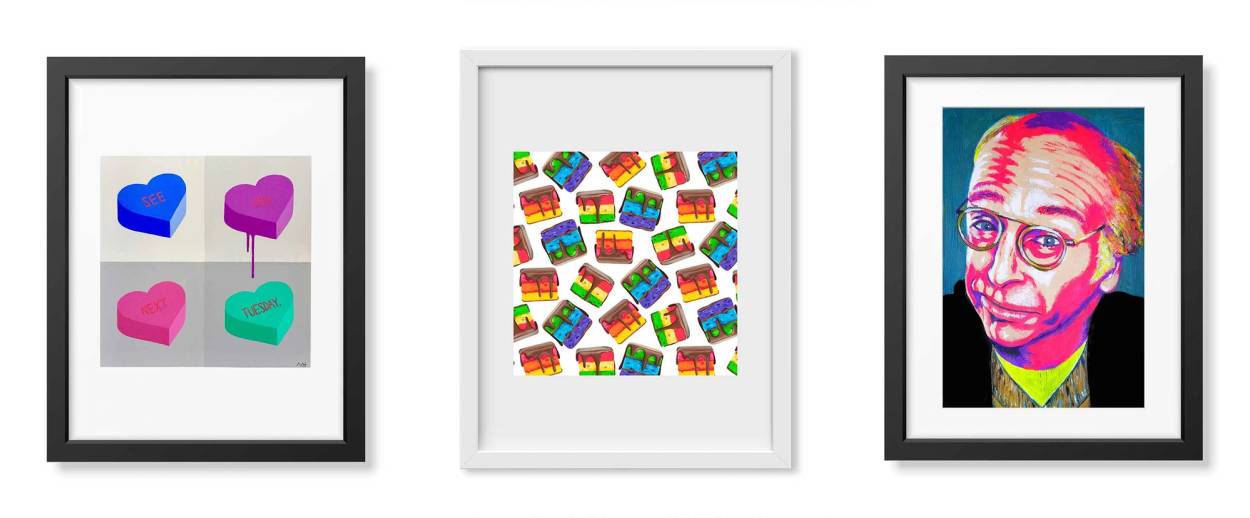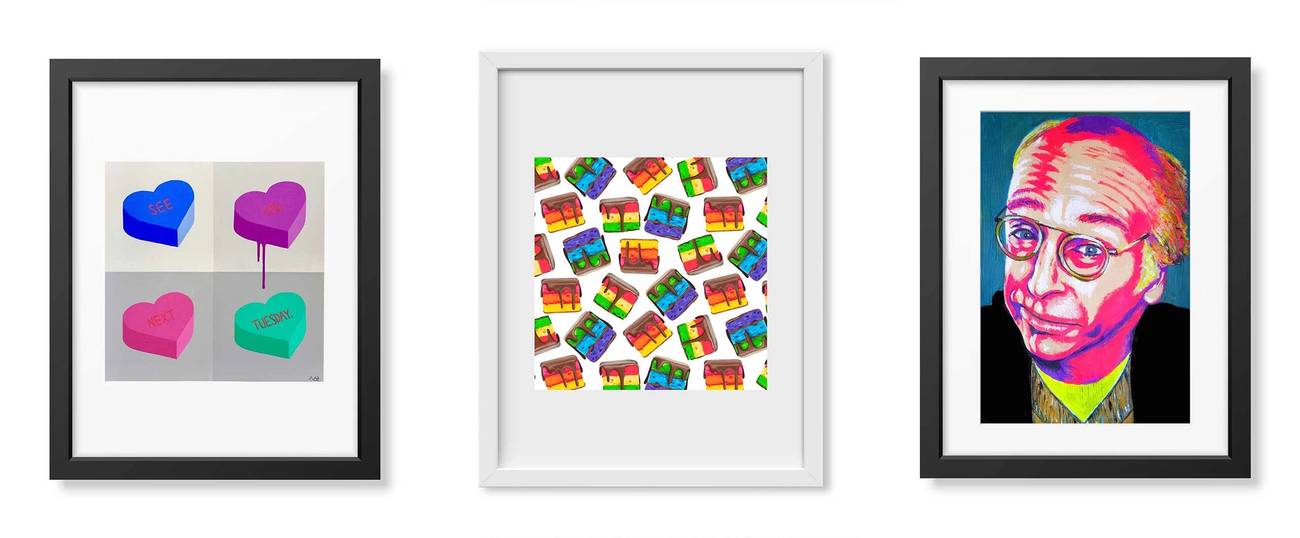Buying Art With a Purpose
ArtSugar offers affordable art online, with 5 percent of proceeds donated to a charity of the buyer’s choosing




Art collecting and tikkun olam may not seem like the most natural match, but Alix Greenberg has found a way to help people give back as they purchase art. Her website ArtSugar not only gives artists a platform to market and sell their work, but also donates 5 percent of each sale to a charity selected by the buyer from an extensive list.
ArtSugar features more than 40 artists from around the world, who sell each print in editions of 10. You can find works from mostly millennial artists, ranging from Anna Panchenko’s photographs of suggestively open mouths to Greenberg’s own portraits of celebrities (I have her Larry David print), to Blair Davidson’s candy-covered prints that entice you to break in case of emergency. Charities include everything from Autism Speaks to Doctors Without Borders, as well as a range of Jewish giving options.
ArtSugar combines art and philanthropy in an exciting and innovative way, attracting a new generation of art collectors invested in making their purchases count. Since Greenberg wants to make art more accessible to a younger audience, most of the pieces sold on ArtSugar cost less than $150. As someone who wants to collect art but is priced out of the mainstream art market, I love that there is a space where you can find quality art while also doing some good. And not only is ArtSugar doing good, they’re doing well: According to a running count on its homepage, they’ve donated $12,237 to charitable causes.
“Tzedakah is certainly part of my DNA,” Greenberg told me, “I was raised with parents who were both involved in philanthropic causes, and the notion of giving back has always been intertwined with my Jewish identity.” For Greenberg, who has a bachelor’s in fine arts from Cornell and a master’s degree from Christie’s Education, art was the logical place to start. “Having devoted my professional and academic career to the fine-art world, the merging of the two—art and tzedakah—was kind of a no-brainer,” she explained. “The business model that felt right to me was capitalizing on artistic practice while simultaneously donating to various organizations, either meaningful to our customers, our artists, or personally significant.”
Alexandra Pucciarelli is an editorial intern at Tablet.